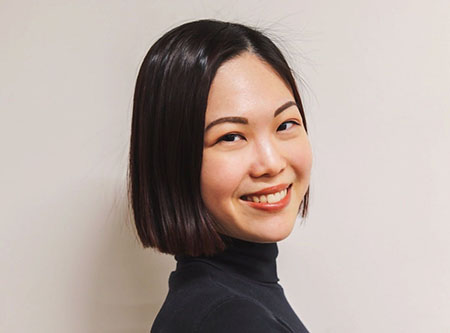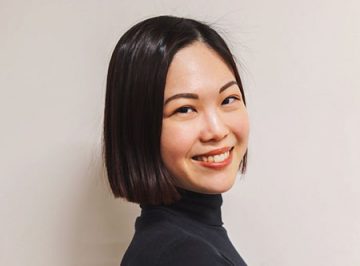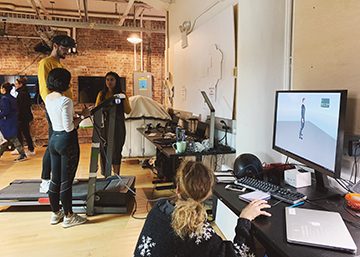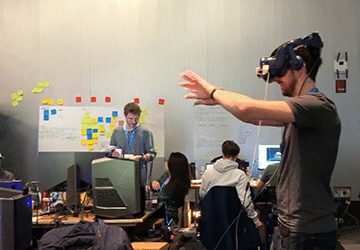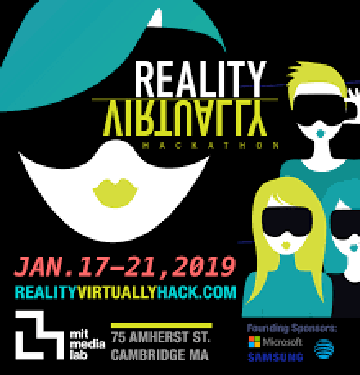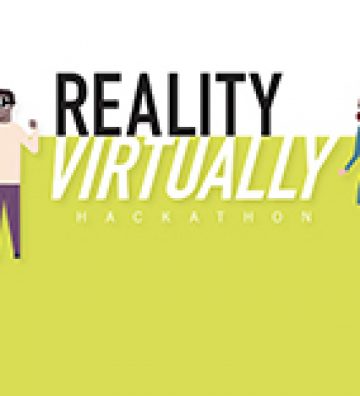Through VR, AR and Much More – Interview with Kimberly Lin
We live in the 21 Century amazing world where art, technology, and science are converging to provide numerous innovations, virtual reality (VR), augmented reality (AR), Machine Learning, UX Design, etc. Cross-field collaboration enables artists, engineers, and scientists to work together. It is exhilarating to see the vision of many people become realities and many more exciting possibilities are waiting for professionals to charge ahead. Among the leaders in this emerging field is the ITP (Interactive Telecommunications Program) at the Tisch School of the Arts at New York University. Recently, I had the opportunity to talk with one of its recent graduates, Kimberly Lin. Seen in her illustrations, below, we hope our readers can gain insight into this program and the exciting project Kimberly has created under this program.
Q: Congratulations on your recent completion of the ITP (Interactive Telecommunications Program) master program at NYU′s Tisch School of the Arts. Please tell us about ITP and what skills students can learn from this program?
A: ITP is a two-year graduate program whose mission is to explore the imaginative use of emerging technology – how they might improve or bring joy into people′s lives. It is often described as the art school for engineers and engineering school for artists. There is a wide range of classes that offers different skill sets – VR, AR, machine learning, physical computing, algorithmic composition, web development, voice technology, UX design… you decide what you want to learn. What is unique about ITP that is often not found in a conventional art school is that we highly encourage collaboration among your peers. In ″the real world″, working solo is rather a rare occasion and hence this ability to develop and manage projects with people across disciplines is perhaps the most practical skill you would walk away from ITP.
Q: Your undergraduate study was in fine arts. How was the transition to this new field which involves coding and engineering?
A: Although our cohort was made up of 110 candidates with remarkably diverse backgrounds (art, music, design, engineering, education, tech, business…), most people came in with a basic understanding of coding. It was especially challenging in my first semester: I struggled to complete my Javascript assignment that was rather easy for most of my classmates. However, I also realized my own strength in conceptual/critical thinking of which I was able to offer in return to peers who have helped me build my coding and engineering knowledge.
Q: Recently the ″Immersion Exhibition″ has become popular and can be seen in many major cities. Please tell us what it is and whether your major prepares students to participate?
A: Living in a digitally-oriented world has changed our way to interact with others and products as well as how we perceive art. Whether it is through using Augmented Reality as a tool to provide information on a traditional artwork or creating a large room-scale installation with visuals that responds to the audience′s input, integrating interactive digital content at museums can encourage the audience to learn, navigate and play. In an environment like ITP where you are constantly exposed to new technology, you think fast, learn fast and have access to a network of diverse talents who can take care of different aspects of an immersive experience.
Q: In what industries can your majors find the most work? What are the typical entry positions?
A: Tech, Advertising, Education, Arts and Entertainment are the common industries to find our alums. Typical positions are creative technologist, front/back end developer, design strategist, VR/AR developer, UI/UX designer, art and tech educator.
Q: Please share with us some of the projects that you undertook under this major.
A: I have made so many projects in the past two years! I will talk about my most recent project ″Super Frustrated NYC Modern Love Stories″ that I created for my thesis and you can check out my website https://www.kimberly-y-lin.com/ for more details.
Super Frustrated NYC Modern Love Stories is a location-based storytelling mobile site that provides a glimpse into how millennials date in New York City. It is built with Javascript, HTML, CSS and 27 curated audio stories from 16 millennials. When you are at a bar, restaurant or park and wonder if any breakups have happened right where you are, you can go to https://www.superfrustrated.nyc/ on your phone. It will ask for your location. Sends your location to Javascript to check if it matches with any of the 27 sets of coordinates. If it does, an audio file of that frustrating date will pop up. You can then listen to the story. If your coordinates did not match with any of the 27 stories, you will receive a message, ″No frustrating dates were reported here…yet″.
Q: Please tell us the latest exciting developments in VR.
A: The current state of VR is often limited to a single user sitting in a small space looking into a boundless world due to the bundle of cables attaching the headset to its power source. Both Oculus and VIVE released their wireless headsets this year which allows users to move more freely and enhances immersion.
This past January, I attended the Reality Virtually Hackathon 2019, a three-day hackathon that brings together interdisciplinary minds to create new experiences using VR, AR and MR at MIT Media Lab. I met a hacker who has developed a prototype of a VR headset that is not only wireless but also waterproof. It is intriguing to learn that we might be able to experience VR underwater in the near future.
Q: What advice would you give to aspiring young students who would like to attend this program?
A: Learning cutting-edge technology is exciting but doesn′t forget to take the time to develop your idea. The concept stays but the most recent new tool will no longer be new in the blink of an eye.
Q: If you don′t mind sharing with us, what is your career goal and what would be your dream job?
A: I would like to see my ideas being acknowledged in real life with a physical presence that encourages conversations and therefore, my goal is to become a creative director at a digital agency.
We thank Kim for sharing her thoughts on this exciting program at NYU. We sincerely wish her great success in charging into this uncharted future.
